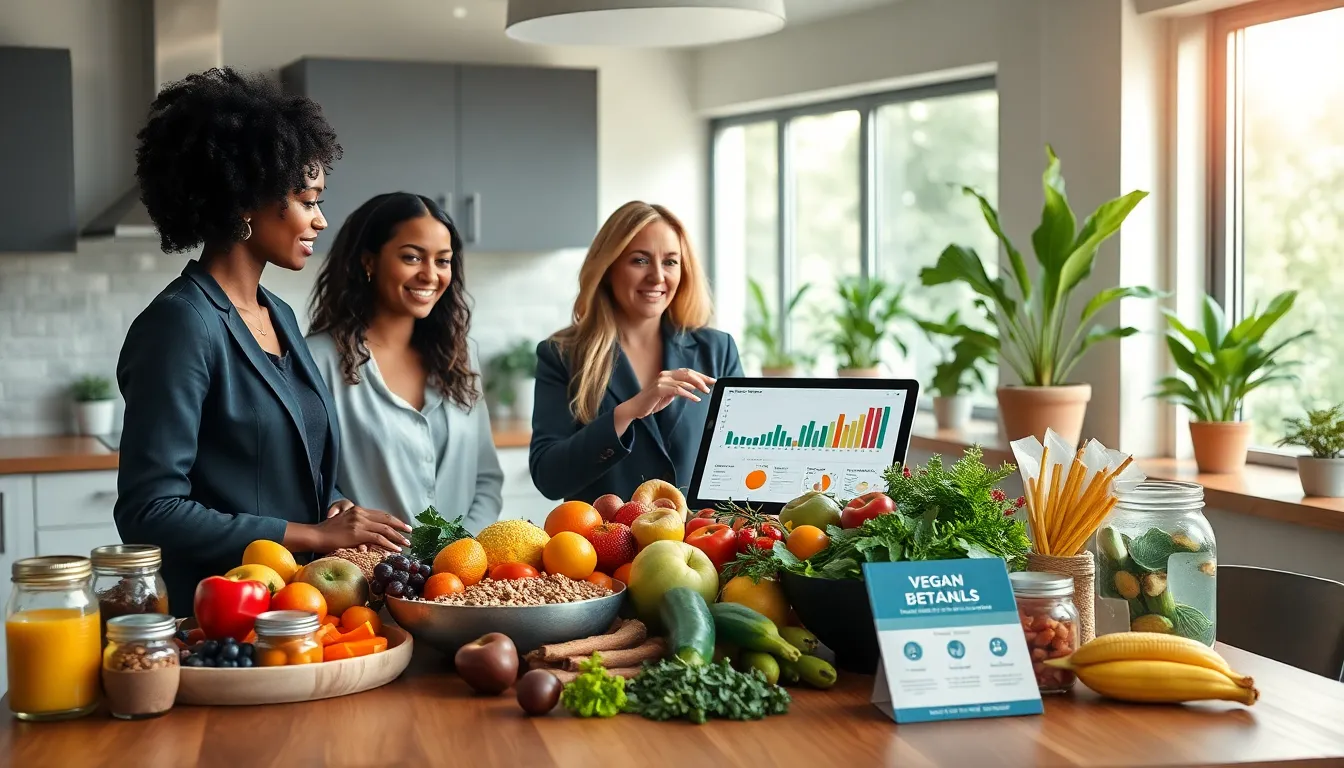In a world where avocado toast reigns supreme and kale might as well be royalty, the food industry is constantly evolving. But what’s cooking in 2025? Spoiler alert: it’s not just your grandma’s recipes. Trends are shifting faster than you can say ‘plant-based burger.’ Buckle up as we jump into the latest food industry trends that are shaping how we eat, cook, and even think about our meals.
Table of Contents
ToggleCurrent Trends Shaping the Food Industry

Health and Wellness Priorities
Consumers are taking their health more seriously than ever. This shift isn’t just a fad: it’s a lifestyle. They’re searching for foods that not only keep them satisfied but also fortify their bodies. Think nutrient-dense snacks that pack a protein punch or botanicals that boost immunity. Brands that underscore health benefits in their marketing message are hitting the sweet spot with buyers.
Sustainability and Ethical Sourcing
If the past few years have taught us anything, it’s that consumers care about where their food comes from. Sustainability isn’t just buzzwords, it’s a demand. From ethically sourced seafood to locally grown produce, transparency in sourcing is crucial. Businesses that prioritize the health of the planet alongside their profit margins are often rewarded with customer loyalty. After all, who doesn’t want to support a company that genuinely cares?
Tech Innovations in Food Production
Innovations in technology have revolutionized food production. Blockchain, AI, and precision agriculture techniques are not only optimizing yield but also ensuring food safety. Imagine knowing the exact origin of your chicken nugget just by scanning a QR code. Forward-thinking brands are embracing these innovations to meet consumer demands for quality and transparency.
Plant-Based and Alternative Proteins
Gone are the days when vegetarian options were limited to soggy tofu and bland salads. Plant-based diets have exploded in popularity, leading to a surge in alternative proteins. Pea protein, lab-grown meat, and other innovative ingredients are catching the eye of both vegans and omnivores alike. This trend not only caters to the betters but also reduces the environmental impact associated with meat consumption.
Cultural and Global Influences on Food Choices
The Rise of Fusion Cuisine
If variety is the spice of life, fusion cuisine is the extra kick that keeps it exciting. Combining flavors from across the globe has led chefs to create innovative dishes that resonate with diverse audiences. Think Korean tacos or sushi burritos. Globalization has opened doors wide, allowing culinary creativity to flourish and introducing adventurous palates to new tastes.
Regional Flavors and Local Ingredients
Even though the allure of fusion, there’s a strong movement toward celebrating regional flavors. Consumers are gravitating towards foods that highlight local ingredients, paying homage to traditional recipes passed down through generations. This not only supports local economies but also fosters a sense of community. Brands that spotlight heritage and authenticity are often seen as more trustworthy by discerning customers.
Consumer Preferences and Behavior Changes
Convenience and Ready-to-Eat Options
In a fast-paced world, convenience is king. Ready-to-eat meals, meal kits, and snackable items are becoming staples for busy consumers. Nobody has time for endless meal prep. Brands that deliver solutions catering to this shift are thriving, whether that’s an easy salad kit or a gourmet frozen dinner with chef-driven recipes.
Online Ordering and Delivery Services
The growth of online ordering and delivery services has fundamentally changed how people dine. Platforms like Uber Eats and DoorDash have made it easier than ever to enjoy favorite restaurant meals from home. The pandemic accelerated this trend. Now, restaurants of all sizes are optimizing their menus for delivery to meet the growing demand for at-home dining.
Food Safety and Transparency
The recent global health crises have heightened consumer awareness about food safety. Transparency about ingredients and sourcing is not just preferred: it’s expected. Customers want to know what goes into their food. Brands that make this information readily available will not only gain trust but also foster a loyal customer base.
Challenges Facing the Food Industry
Supply Chain Disruptions
While it’s easy to get lost in the trends, significant challenges also loom in the background. Supply chain disruptions continue to plague the food industry, from sourcing raw materials to ensuring timely delivery. These hurdles have forced companies to rethink their operational strategies, making agility and adaptability essential.
Regulatory Changes and Compliance Issues
The food industry is heavily regulated, and staying compliant can be a challenging job. New laws and regulations often emerge, pushing companies to keep up or face consequences. Navigating this intricate web requires expertise, so making it essential for businesses to remain informed and proactive in their compliance efforts.

